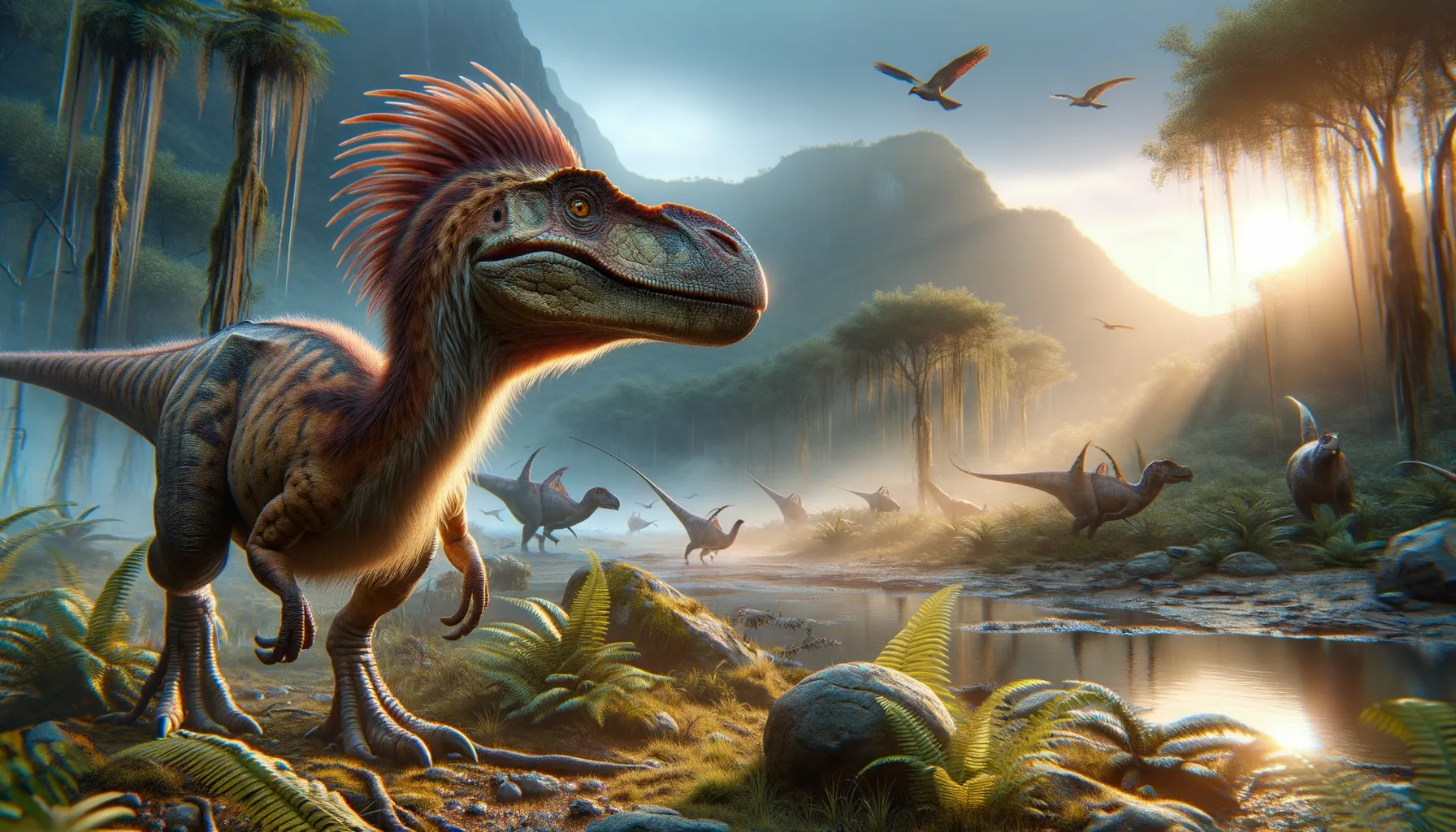
Tongtianlong
A crest that time almost forgot!
Period
Cretaceous
Length
Roughly 5 meters long.
Height
About 2 meters tall at the hips.
Weight
Estimated at around 300 kilograms.
Tongtianlong was an oviraptorid dinosaur which roamed the planet during the late Cretaceous period. Its fossil was discovered in China, revealing a fascinating glimpse into dinosaur evolution right before the mass extinction. This chicken-sized dinosaur was not only distinctive for its beak and crest but also for its role as a bridge between more primitive species and modern birds.
Diet
Tongtianlong was likely an omnivore, feeding on both plants and smaller animals or insects. Its beak suggests it could have picked fruits or seeds and potentially cracked shells.
Hunting
Given its size and build, Tongtianlong may not have been a dominant predator. It likely foraged through its environment, hunting smaller prey opportunistically rather than ambushing larger creatures.
Environmental challenges
During the late Cretaceous period, Tongtianlong faced a range of environmental changes. Fluctuating temperatures and sea levels posed challenges that impacted the availability of food sources. Additionally, heightened volcanic activity during this time may have further stressed ecosystems. Surviving alongside competing apex predators and other evolving species, Tongtianlong had to adapt strategically to its changing world.
Speed
Relatively slow due to its size and build.
Lifespan
Likely several decades, typical for dinosaurs of its size.
First discovery
First discovered in Ganzhou, Jiangxi Province, China, in 2016.
Fun Facts
- Tongtianlong was discovered in southern China and is known as the 'mud dragon' because it was found in a peculiar pose, as if it was stuck in the mud.
- This dinosaur lived during the Late Cretaceous period, roughly around 66 million years ago.
- Tongtianlong was a beaked, bird-like dinosaur that belonged to the oviraptorid family, which is known for its strange and diverse appearances.
- Its name Tongtianlong means 'dragon of heaven's road,' highlighting its unique impression on paleontologists.
- Unlike the giant dinosaurs, Tongtianlong was relatively small and lightweight, possibly covered in feathers, suggesting a connection to modern birds.
- The discovery of Tongtianlong has provided valuable insights into the biodiversity of oviraptorids and how dinosaurs adapted to their environments.
Growth and Development
Growth for Tongtianlong likely involved a gradual increase in size as it matured. Young individuals may have been more vulnerable to predators, requiring rapid growth spurts during early life stages. Fossil evidence suggests that it developed features like beaks and crests as it aged, aiding in feeding and possibly attracting mates.
Habitat
Tongtianlong inhabited what is now known as China, thriving in subtropical environments with plenty of vegetation. Its ecosystem may have included forests, wetlands, and open plains, providing a variety of niches to explore for food. The area's geology, including riverbeds, provided ideal conditions for fossil preservation.
Interaction with other species
Tongtianlong likely shared its habitat with both predator and prey species. Interactions with contemporaries could range from competitive foraging to avoiding larger, carnivorous dinosaurs. Its presence may have influenced the behaviors and survival strategies of smaller animals sharing the same environment.
Natural lifespan
Tongtianlong had a natural lifespan stretching over several decades.
Reproduction
Tongtianlong likely laid eggs in nests, much like modern birds. Parental care could have been present, with parents protecting and feeding their young until they were capable of independence. Fossil nests share insights into its reproductive habits and strategies.
Social behaviour
Tongtianlong may have had a gregarious nature, living in small groups or flocks. The presence of features like the crest could hint at social displays for mating or territory defense. Interaction within its groups may have facilitated survival through cooperative behaviors.
Fossil locations
The only known fossil remains of Tongtianlong were found in Ganzhou, Jiangxi Province, China. This find provided remarkable insight into oviraptorid diversity during the late Cretaceous. The region's sedimentary rock allowed the specimen to be well-preserved for scientific study.
